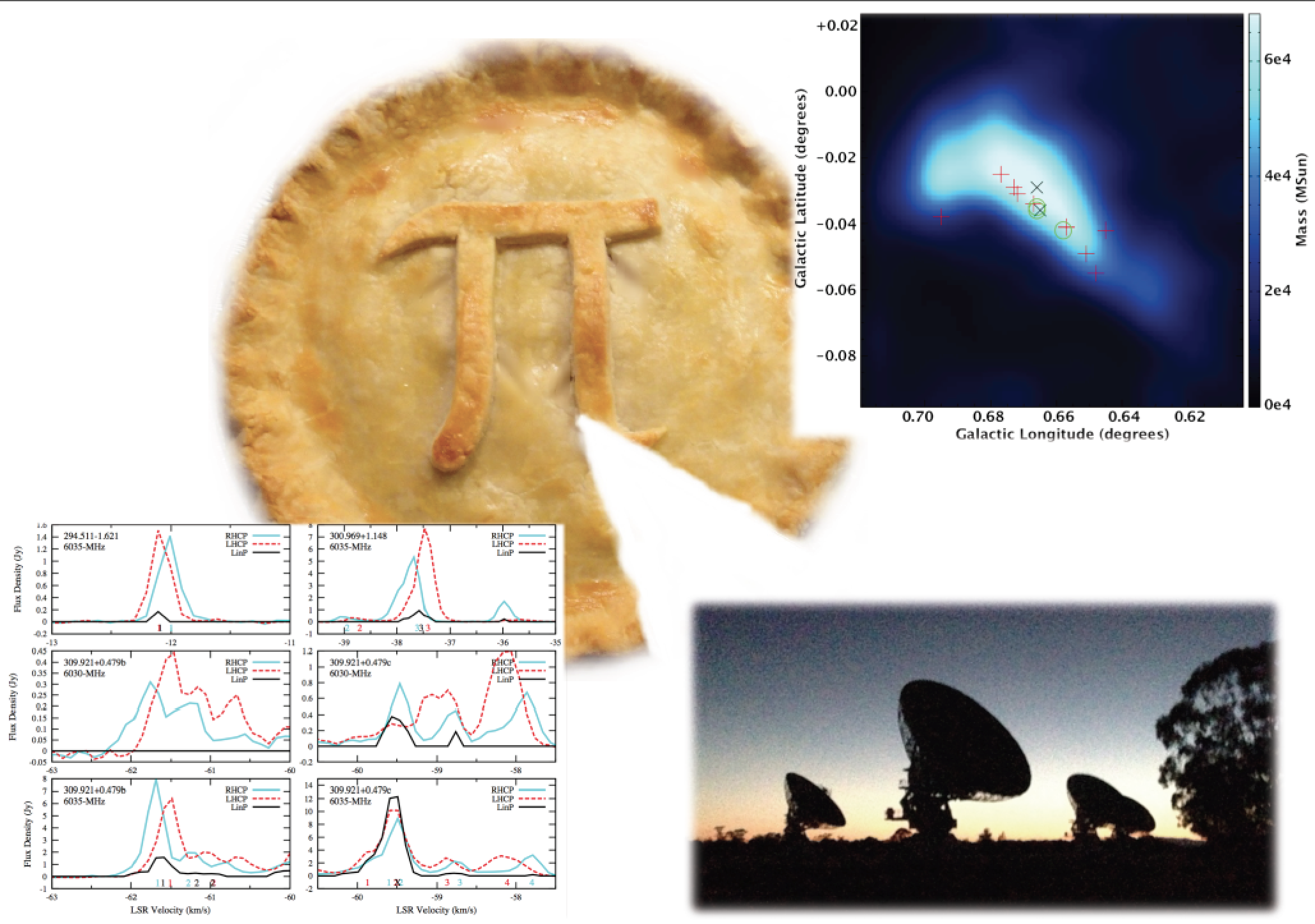| 10th of May 2015 |
|---|

|
| Excited-state hydroxyl maser polarimetry: Who ate all the Pis? |
| by Jimi Green (SKA Telescope) |
| We observed 30 fields of excited-state
hydroxyl (OH) masers in full Stokes polarization with the Australia Telescope
Compact Array (ATCA), detecting 70 sites of maser emission, including 14
towards Sagittarius B2. Amongst all these sites we found 112 Zeeman patterns,
the spectral line signature seen when the emission of a maser is influenced
by the magnetic field that surrounds it. Theoretically the pattern exhibits
3 components, two shifted in velocity (the 'Sigmas') and one unshifted in
velocity (the 'Pi'), however the latter has previously been rarely observed
(hence the title). In our study we find 18 exhibited candidate pi components. This is the largest single full polarimetric study of multiple sites of star formation for these frequencies, and the rate of 16% pi components clearly indicates the pi component exists (and no one in fact ate all the pi's), and is comparable to the percentage recently found for ground-state transitions. This significant percentage of pi components, with consistent proportions at both ground- and excited-state transitions, argues against Faraday rotation suppressing the pi component emission. Reference: Jimi Green, James Caswell & Naomi McClure-Griffiths 2015, MNRAS, in press |